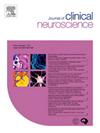Association between thyroid hormone levels and early neurological deterioration in acute ischemic stroke
IF 1.9
4区 医学
Q3 CLINICAL NEUROLOGY
引用次数: 0
Abstract
Background
Acute ischemic stroke (AIS) prognosis is significantly influenced by early neurological deterioration (END). Emerging evidence suggests that thyroid function, particularly free triiodothyronine (FT3) levels and the FT3/FT4 ratio, may play a crucial role in END occurrence. This study aimed to investigate the association between thyroid function parameters and END.
Methods
This study included a total of 1767 AIS patients. Multivariable regression analysis was conducted to assess the associations between FT3, the FT3/FT4 ratio, and other thyroid function parameters with END. Subgroup analyses were performed to explore the potential moderating effects of age, smoking status, and sex on these relationships. The predictive performance of the models was evaluated using receiver operating characteristic (ROC) curves.
Results
The FT3 levels (3.66 vs. 4.03 pmol/L, P < 0.001) and the FT3/FT4 ratio (0.28 vs. 0.30, P < 0.001) were significantly lower in the END group compared to the non-END group. Multivariable regression analysis identified a higher FT3/FT4 ratio as an independent protective factor against END (OR = 1.20, 95 % CI: 1.07–1.35, P = 0.0014). Subgroup analyses demonstrated that this protective effect was more pronounced inpatients older than 70 years, and non-smokers. Furthermore, the predictive model incorporating thyroid function parameters demonstrated certain predictive advantages over the CRP-based model (AUC = 0.688 vs. 0.624, P = 0.0036), suggesting its potential utility in predicting early neurological deterioration in AIS patients.
Conclusions
Lower FT3 levels and a reduced FT3/FT4 ratio are significantly associated with a higher risk of END. The FT3/FT4 ratio may serve as a valuable biomarker for risk stratification in AIS patients, underscoring the potential role of thyroid function in stroke management.
甲状腺激素水平与急性缺血性脑卒中早期神经功能恶化的关系
背景:急性缺血性脑卒中(AIS)预后受早期神经功能恶化(END)的显著影响。新出现的证据表明,甲状腺功能,特别是游离三碘甲状腺原氨酸(FT3)水平和FT3/FT4比值,可能在END的发生中起关键作用。本研究旨在探讨甲状腺功能参数与END的关系。方法本研究共纳入1767例AIS患者。采用多变量回归分析评估FT3、FT3/FT4比值及其他甲状腺功能参数与END之间的关系。进行亚组分析以探讨年龄、吸烟状况和性别对这些关系的潜在调节作用。采用受试者工作特征(ROC)曲线评价模型的预测性能。结果FT3水平(3.66 vs. 4.03 pmol/L);0.001)和FT3/FT4比率(0.28 vs. 0.30, P <;0.001),与非END组相比,END组显著降低。多变量回归分析发现,较高的FT3/FT4比率是预防END的独立保护因素(OR = 1.20, 95% CI: 1.07-1.35, P = 0.0014)。亚组分析表明,这种保护作用在70岁以上和非吸烟者中更为明显。此外,结合甲状腺功能参数的预测模型比基于crp的模型具有一定的预测优势(AUC = 0.688 vs. 0.624, P = 0.0036),表明其在预测AIS患者早期神经功能恶化方面具有潜在的实用性。结论较低的FT3水平和较低的FT3/FT4比值与较高的END风险显著相关。FT3/FT4比值可以作为AIS患者风险分层的有价值的生物标志物,强调甲状腺功能在卒中管理中的潜在作用。
本文章由计算机程序翻译,如有差异,请以英文原文为准。
求助全文
约1分钟内获得全文
求助全文
来源期刊

Journal of Clinical Neuroscience
医学-临床神经学
CiteScore
4.50
自引率
0.00%
发文量
402
审稿时长
40 days
期刊介绍:
This International journal, Journal of Clinical Neuroscience, publishes articles on clinical neurosurgery and neurology and the related neurosciences such as neuro-pathology, neuro-radiology, neuro-ophthalmology and neuro-physiology.
The journal has a broad International perspective, and emphasises the advances occurring in Asia, the Pacific Rim region, Europe and North America. The Journal acts as a focus for publication of major clinical and laboratory research, as well as publishing solicited manuscripts on specific subjects from experts, case reports and other information of interest to clinicians working in the clinical neurosciences.
 求助内容:
求助内容: 应助结果提醒方式:
应助结果提醒方式:


